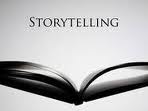 What does ‘storytelling’ have to do with leveraging technology for improving Life Sciences processes? In today’s rapidly changing world of technology you owe it to yourself to learn about and practice the ‘art of storytelling.’ In this blog post I want to give you a summary of why it is a vital skill to learn and practice, some basic do’s and don’ts, and a great reference on this topic.
What does ‘storytelling’ have to do with leveraging technology for improving Life Sciences processes? In today’s rapidly changing world of technology you owe it to yourself to learn about and practice the ‘art of storytelling.’ In this blog post I want to give you a summary of why it is a vital skill to learn and practice, some basic do’s and don’ts, and a great reference on this topic.
Why it’s vital to hone your ‘storytelling’ skill
Selling technology is more difficult these days because of the way your audience process information. You’ve got more competitors looking to compete for the same business. Companies continue to ‘innovate’ and how do you offer these new ideas to the market?
Throughout your career you’ve learned to become an ‘expert’ in a given technology. Ask yourself what distinguishes you from your competitor who happens to be in the same field? I’m in IT services where success does not always mean that you have the lowest rates/cost. I constantly receive feedback that while the competition has the best price they fail to deliver on improvements to the business. Can you tell a story around why your company can do a better job delivering the same IT service?
Basic do’s and don’ts
When we prepare for bid defense or engage with a net new client I’ve often discussed how many slides we should use in a typical presentation? Many of you have ‘off-shore’ resources that can do a wonderful job in applying graphic skills to improve the look of a presentation. So here are some basic things to look out for that will hopefully improve your delivery of your ‘story.’
Do’s
- Go through a process of gathering ideas and developing a timeline for your pitch.
- Know your audience – who are you selling to….
- Manage the time to deliver your message.
- Practice your timing. Your slides should be a reminder to the audience of your topic.
- Finish early and look to engage in a Q&A.
Don’ts
- Do not use your presentation as a document. I’ve seen off-shore resources offer lots of text on each slide (simply move this to your notes section).
- Avoid the use of small fonts on your slides.
- Resist the temptation to develop your story in PowerPoint. Use a drawing tool (Visio) or Word to outline your ideas. If you collaborate with your team make full use of posit notes to organize your presentation.
- Avoid acronyms and abbreviations, and do not take for granted that your audience is ‘technically’ at your level.
- Read the text from your slide. I know this is basic presentation training. Yet I’ve seen too many presentations where this continues to happen.
A few weeks ago I posted on my LinkedIn Reading list a book entitled: resonate by Nancy Duarte. The author dissects ‘storytelling’ from content through delivery. What Distinguishes this book are the examples she uses to illustrate key points. I find myself referring to this book to prepare for various presentations.
I highly recommend this book.
Thanks,
Jim

